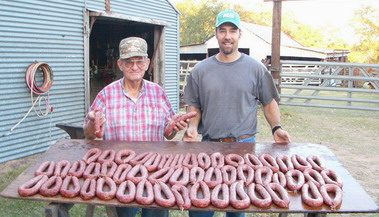Many expanding suburban communities and some well-developed cities face a dangerously expanding deer population. In backyards, native deer graze on shrubbery and spar over the best territory. They walk through an empty driveway in Central Texas, meander through a Washington D.C. subway stop and into run through Colorado streets. White-tailed deer are a costly municipal menace that some call a nice problem to have.
Deer Overpopulation not Cool
To many, the opportunity to observe deer walking, feeding and living within their neighborhood might seem kind of neat at first glance, but it’s a very real and big problem in many areas across the country. “They wouldn’t think that if they were faced with $1 million worth of damage and, you know, 50 or 60 dead deer on the road that need to be disposed of. It’s not a nice problem to have,” says Gerry Astorino, the mayor of Lakeway, Texas.

Residents of the Hollywood Park community in San Antonio, Texas, are singing the same song; there are way too many deer living among them. In large numbers whitetail have become much more than a nuisance; the deer overpopulation is also a safety concern for many reasons.
Now Lakeway and Hollywood Park are trapping the deer living within their communities, thinning herds that have grown to more than 1,000 animals. The deer will be processed and the meat donated to local food banks. It’s a win-win for the communities and those that need lean protein, but not everyone is a supporter of the programs.
Too Many Deer, People?
The sight of Bambi going to be butchered has brought protests. “We don’t want it to be just trap and trap and trap and slaughter, slaughter, slaughter until they’re all gone,” says Debbie Trueman.
In natural situations, white-tailed deer populations tend to rise and fall based on environmental factors. When there is food to eat deer populations grow, but when food availability is low deer numbers decline. Deer populations found living within suburban areas do not see these variances because of stable food supplies.
The regular irrigation of lawns and the feeding of deer both add food to the system and help prop-up deer numbers. Most communities dealing with overabundant deer populations have banned the feeding of deer, but some residents sympathize and covertly feed them.
But Sunny Williams, who had a knee-shattering collision with a doe, is not as sympathetic. “They don’t care about people that are severely injured,” says Williams, adding that they had to put his knee back together with wires and screws. Nearly half the cars in a nearby body shop visited by a reporter hit deer.
“If I had to guess, an average repair is probably $3,000 or so,” says John Caldwell. One of the biggest parts of the problem is urban and even suburban deer population moving further and further out of cities and into areas once known only to wildlife. “I don’t know that there’s a long-term solution to suburban deer problems in this country,” says Bryan Richards, of Texas’ Parks and Wildlife Dept.
Population Growth, Limited Solutions
And so residents in some Texas communities continue to hotwire their flowerbeds with electric fencing, literally wrapping their homes in wire to keep deer away. Relocating them to ranches, experts say, is just a temporary fix. “I think that communities have to become more accepting of lethal means of population control,” says Richards.
Highland Park, Illinois, captures whitetail does and a veterinarian surgically sterilizes them in an attempt to curb the growth of their overabundant deer population. It’s very expensive procedure, but for gun-shy suburbs, it may an option to keep the backyard from becoming a jungle out there.
Source




